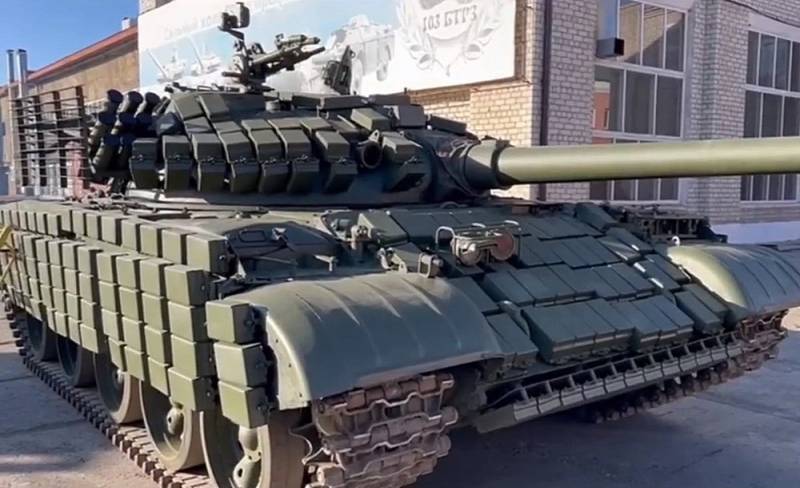General Gurulev boasted of the modernization of the ancient T-62
A report appeared on the Web from the territory of "103 Armored Repair Plant" (JSC "103 BTRZ"), which was once again visited by Lieutenant General of the Reserve, Deputy of the State Duma of the Russian Federation (member of the Defense Committee) Andrey Gurulev. This is the largest enterprise for the repair and modernization of armored vehicles in the Russian Far East, located in the village of Atamanovka in the Trans-Baikal Territory.
It should be noted that the specified plant is actively engaged in the restoration and improvement of the T-62, T-62M and T-62MV tanks. At the same time, Gurulev explained that he had specially come to JSC 103 BTRZ to show the Russian people how today the local industry, working in three shifts, helps to carry out the NWO.
How tanks that are over 50 years old are being transformed into modern, normal vehicles that are able to perform the tasks and withstand the challenges that are at the forefront today
he boasted.
The plant is also engaged in the restoration and improvement of armored reconnaissance and patrol vehicles. The BRDM-2 is being upgraded to the BRDM-2MS variant by installing a new engine, a thermal imaging sight and additional armor.
At the same time, it is not entirely clear to us how morally and technically obsolete T-62s, even if modernized, can be called "modern machines." Unfortunately, at one time Anatoly Serdyukov, having started the Armata project when he was the head of the Russian Ministry of Defense, did not have time to send all the T-62, BRDM-2, armored trains and other “antiques” for remelting. About 900 T-62 units remained in the storage warehouses, which are sent to the special operation zone. At the same time, there are thousands of T-72 and T-80 tanks in the same warehouses, which are much better than the T-62.
Note that a new gunner's sight is being installed on T-62 tanks, presumably this is 1PN96MT-02 with a thermal imaging channel and a laser rangefinder, which was demonstrated at Army-2022 (the 1K13 night sight is hopelessly outdated). With the new sight, the gunner will be able to detect targets at a distance of up to 3000 meters, which is a definite step forward for such an ancient tank as the T-62.
However, having gained the ability to detect and hit the enemy, tankers still remain vulnerable to enemy fire. No sandbags, lattice structures and other similar "know-how" at the front will change this, because the armor protection of the T-62 itself has not undergone any significant changes. Installation on the forehead and body of the Kontakt-1 DZ cannot interfere with modern anti-tank weapons of Western and Ukrainian production. In addition, the T-62 will have to face on the battlefield not the same ancient American M-60 tanks, but M1 Abrams, German Leopard 2 and British Challenger 2.

Information